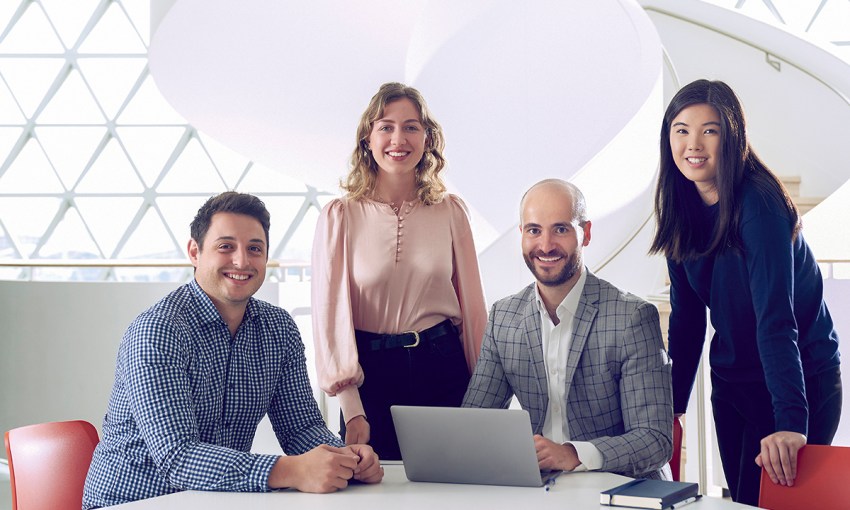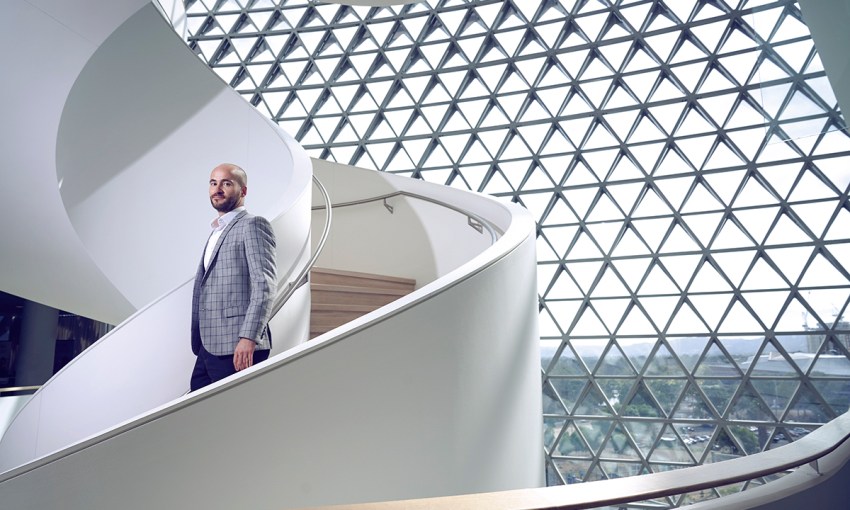Mental wellbeing means feeling satisfied with where your life is heading, coping with the daily ups and downs and being able to bounce back. Here’s how.
Mental wellbeing: It’s a state of mind
While we’re all busy living life, balancing the daily delights and drudgery, the big questions can rise to the surface: “Why am I here?” and “What makes me happy?”.
They are thoughts that play into our overall mental wellbeing, yet few of us know how to define what that is, how to measure it or tap into ways to build on it.
The term “mental wellbeing” is commonly confused with notions of mental illness and mental health. Mental wellbeing refers to how well we feel and function day-to-day, as individuals and within our communities. Mental illness refers to a wide range of mental conditions that can include depression and anxiety.
Statistics show that one in five Australians suffer from mental illness and half of all lifelong mental health problems begin before the age of 14. That’s why the focus for many academics and practitioners in this field is on prevention rather than cure.
So, laying the foundations of good mental health early on, through diet, exercise and connection with other people, for example, is best practice rather than treating the symptoms of mental illness down the track.

Joseph Van Agteren leads a research team at the Wellbeing and Resilience Centre based at the South Australian Health and Medical Research Institute (SAHMRI). The team’s research focuses on how to ensure South Australians enjoy a “state of wellbeing” and good mental health. Joseph says two key concepts are at the heart of this: wellbeing and resilience.
“Wellbeing is when people feel good and are able to realise their abilities, cope with the normal stresses of life and feel a sense of belonging in their community,” says Joseph, who is from the Netherlands and completed a Master of Science in Psychology at Maastricht University. “Resilience is when people feel they have enough resources to bounce back from and grow after stress and adversity. For both, it’s important that the resources you have outweigh the barriers you may face.
“Resilience really is an outcome, it is not just something you are born with or a trait. We all face stressful times and as long as we feel we can snap back to our previous selves fast enough then we are resilient. And this doesn’t mean you don’t experience distress, grief or any other negative states. That’s all part of being human. We just need to make sure it doesn’t keep us out of action forever.”
The Wellbeing and Resilience Centre was established at SAHMRI five years ago and its early work consisted of educating and training people about “positive psychology”, which Joseph describes as a sub-field of psychology that looks at the notion of “what makes life worth living?”.
He says it’s important to distinguish between having mental wellbeing and being happy.
“People often use happiness as a proxy for mental wellbeing,” he says. “I am not a big fan of the word ‘happiness’, because it really reduces something as complex as our wellbeing to something rather futile. Wellbeing is more than just feeling happy.

“For example, all of us have days that just don’t work out for us. The ones you can’t wait to end. They can cause a lot of negative emotions and affect how ‘happy’ we feel. But at the same time, we still feel we have meaningful work, we feel part of a community, enjoy our relationships and feel physically healthy. So, overall we are pretty satisfied with our lives, despite not feeling too ’happy’. Wellbeing captures the positive sides of our mental health simply better than the word ‘happiness’.”
The Wellbeing and Resilience Centre has developed measurement techniques to decipher if South Australians are enjoying good mental wellbeing. One of those techniques is an online survey for the general public that focuses on scientifically measuring and building positive states of mental health. The “Complete Mental Health” survey, which takes around 10-15 minutes, covers six main areas – wellbeing, mood, health, stress, resilience and anxiety. The Wellbeing platform, which was launched last year, gives participants an immediate online report about their results, as well as providing resources on how to build mental health.
“And you can re-take the measurement test whenever you like, so you can track how you do over time,” says Joseph.
“But simply using individual wellbeing measures to guess how happy we are as a state is a bit sloppy. You have to think about employment, housing, quality of life, access to schooling and health services. It becomes pretty complicated fairly quick.
“If you ask me, I think South Australia has a lot going for it compared to other big cities. Taking everything into account, quality of life here is way better and while a lot of things could be improved, I think we have it pretty good here. I can’t say it isn’t one of the reasons why I am so attracted to the city.”
Researchers at the Wellbeing and Resilience Centre have also worked extensively with community groups, including workforces, older adults, carers and disengaged-youth, teaching resilience training.
One of their most recent projects, Resilient Futures, was led by Joseph’s colleagues David Kelly (one of the new SA Mental Health Commissioners), Matthew Iasiello and Adele Liddle and focused on delivering resilience training to youth who are disengaged from mainstream education.
“We needed to deliver the training in a more flexible format so it would resonate more with young people,” Joseph says. “That project really transformed the way we deliver the training and got really creative, showing that you can teach important psychosocial skills in a more fun and interactive way.
“For instance, we used sci-fi or comic book characters to help teach people about character strengths and values, and how they can use similar strengths and values in their own life.
“We trained about 1400 young people and we saw improvements in wellbeing and distress. The feedback has been overwhelmingly positive.”
Joseph says he was surprised by the results of a recent project he and his team undertook with Flinders University students. It showed that, when it comes to mental health, the students were doing far worse than the general population.
“So much so that it prompted us to check whether our system was wrongly calibrated,” he says. “It wasn’t.
“We found that 65 per cent of students showed distress levels that require care, compared to the often-cited 25 per cent in the general population. If we also factor in wellbeing and resilience, only 19 per cent were doing well.
“It really highlights a population of high need who are struggling more than we care to admit. We often talk about the wellbeing of our students, but we really need to do more than we’re doing right now. As a result of this project, we’re now piloting a new training format that takes both wellbeing and distress into account in a tailored way.”
Joseph says the low levels of mental wellbeing among students could be due to the stresses of university life, often involving new rules and behaviours, new relationships and a new level of independence. Financial difficulties can also cause distress and low wellbeing among students.
Technology and the rise of social media has also had an impact on mental wellbeing, particularly for young people. Technological advances have outpaced the ability for educators, policy makers and mental health experts to put proper checks in place and this failure, according to Joseph, has played a big role in the problems treated by mental health experts.
“Social media does pose problems for mental health as it makes it easier to bully from behind a screen, for example,” he says. “It’s also easier to find information that’s sensitive, which would otherwise have easily been kept from kids. But most of these problems are issues in society generally and we need to teach ourselves how to better deal with them. We used to be able to pretend that certain things didn’t happen and shielding ourselves from them now is more difficult than ever in the 24/7 cyber world.”
As for ways to build our own mental wellbeing and mental health, the evidence shows that being physically active, practicing mindfulness, being in nature and spending time connecting with people and communities are all vital elements.
“What people need to figure out is what works for them and their own lives,” Joseph says.” It’s very similar to physical activity. Some people like to run, other lift weights. Some are talented at it, for some it is more difficult. Sometimes the most effective things are the ones we dislike the most. And the most important thing: improvement doesn’t happen overnight. You have to put in real effort.
“You need to start experimenting and only by trial and error can we find out what works best for us. But start small and set some achievable goals related to activities you think you will be able to maintain over time. That goes a long way.
“If you need a place to start, give mindfulness a go. For most of us it can do wonders for our mood and wellbeing. Mindfulness is not just meditation. It’s about taking time to be in the present. You can do mindful eating instead of having a chow down. You can walk mindfully instead of rushing home. Or you can use a mindfulness app before going to bed to calm your mind. The most important thing though is to start anywhere. A small, positive change today can work wonders.”
This story first appeared in the February 2020 issue of SALIFE magazine.
including free delivery to your door.



